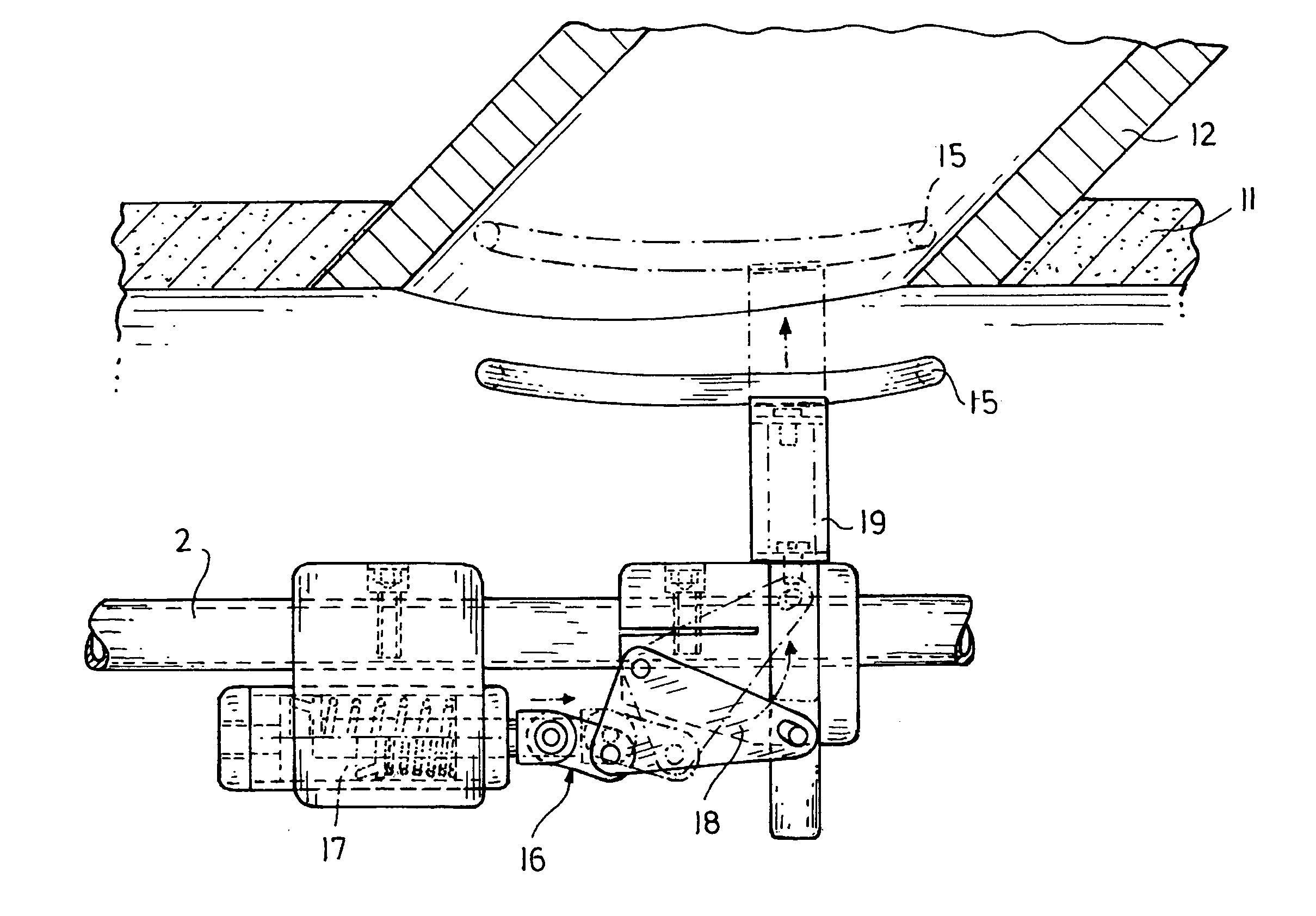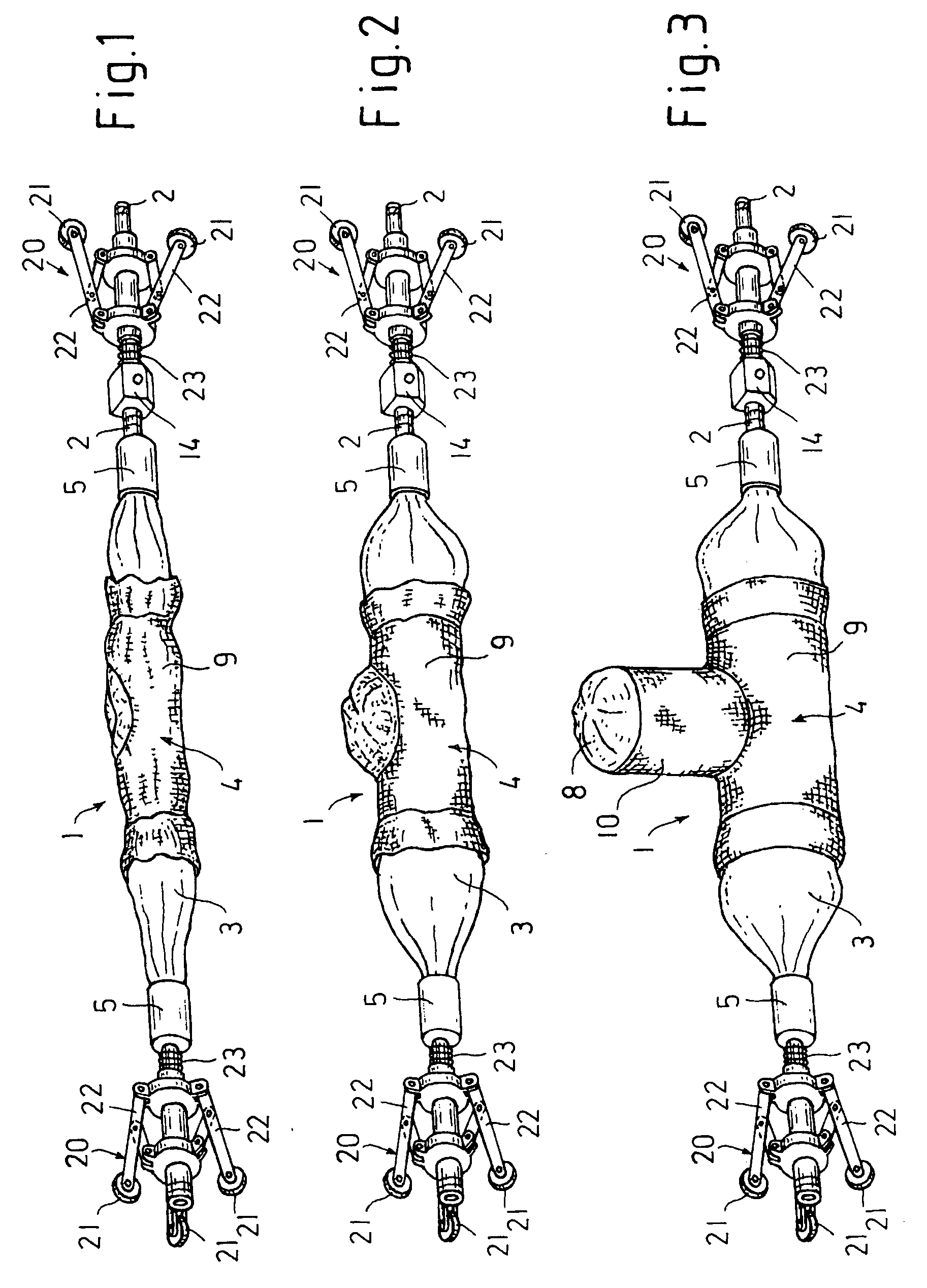Device and method for pipeline rehabilitation
a technology for pipelines and hoses, applied in the direction of shaft linings, tunnel linings, underground chambers, etc., can solve the problems of difficult alignment of the hose-shaped part of the lining the problem of transporting such devices through the main line to the junction region of the building service line, so as to reduce the time for curing or setting
- Summary
- Abstract
- Description
- Claims
- Application Information
AI Technical Summary
Benefits of technology
Problems solved by technology
Method used
Image
Examples
Embodiment Construction
[0047]Referring now to the drawings, wherein like reference numerals refer to like parts throughout, there is seen in FIGS. 1-3 a packer 1 essentially consisting of a rigid packer rod 2, onto which the packer hose 3 and a flexible pipe lining 4 are pushed. Each of the two ends of the packer hose 3 is tensioned with a tensioning collar 5 around a cylindrical connection head 6 (cf. FIG. 7), so that an airtight connection is produced. The connection heads 6 are connected on their side rigidly and airtight to the packer rod 2. The connection head 6 shown on the left in FIG. 7 also receives a pressure line 7.
[0048]Furthermore, a connecting hose 8 is attached to the packer hose 3. This connecting hose has an angle to the packer hose 3 that corresponds to the angle between a building service line and a main line, which is to be rehabilitated in the junction region. In the FIGS. 1-3 this angle equals 90°. For rehabilitating the pipe connection shown in FIG. 7 the angle must equal 45°.
[0049]...
PUM
 Login to View More
Login to View More Abstract
Description
Claims
Application Information
 Login to View More
Login to View More - R&D
- Intellectual Property
- Life Sciences
- Materials
- Tech Scout
- Unparalleled Data Quality
- Higher Quality Content
- 60% Fewer Hallucinations
Browse by: Latest US Patents, China's latest patents, Technical Efficacy Thesaurus, Application Domain, Technology Topic, Popular Technical Reports.
© 2025 PatSnap. All rights reserved.Legal|Privacy policy|Modern Slavery Act Transparency Statement|Sitemap|About US| Contact US: help@patsnap.com



